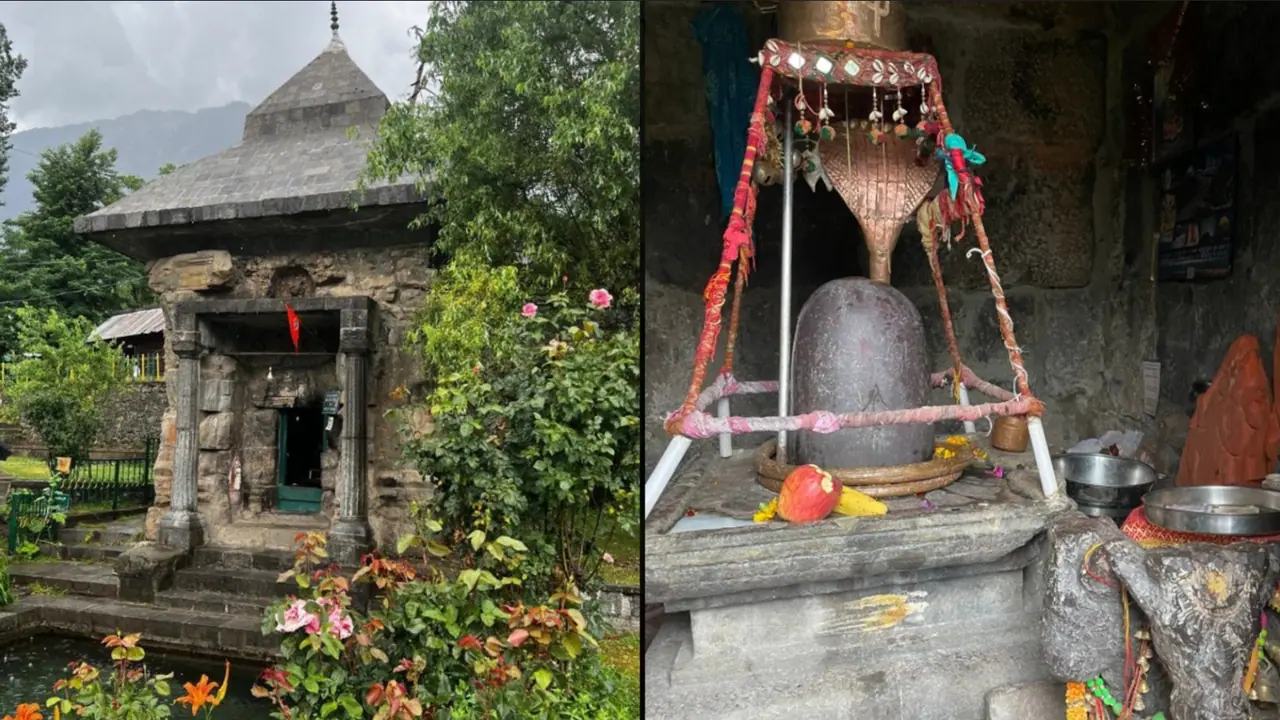Mamaleshwar Temple in Pahalgam, built over 1,600 years ago, stands as a powerful symbol of Kashmir’s history and resilience, surviving centuries of change, mythological significance, and modern-day conflicts including the recent Pahalgam attack.
Tucked away in the scenic town of Pahalgam in Jammu and Kashmir stands a small but powerful reminder of India’s ancient past — the Mamaleshwar Temple. Built more than 1,600 years ago, this Shiva temple has witnessed the rise and fall of kingdoms, waves of invasions, and modern conflicts. Yet, it continues to stand quietly, offering prayers to Lord Shiva even today.

A temple older than most know
The Mamaleshwar Temple was built around 400 CE, during the rule of King Jayasimha. Its name is said to come from “Mamal,” another name for Lord Shiva. According to historians, it is one of the oldest surviving stone temples in Kashmir. While many grand structures were built later across the Valley, few have endured like Mamaleshwar.
Made entirely of large grey stones without any binding material like cement, the temple is a beautiful example of early Kashmiri architecture. It features a small sanctum (garbhagriha) with a sacred Shiva linga inside, and a pure mountain stream flowing nearby — a characteristic often found near ancient Shiva temples.
Mythological significance
In Hindu mythology, Pahalgam holds an important place. It is considered the starting point of the famous Amarnath Yatra — the pilgrimage to the holy Amarnath cave where Lord Shiva is believed to have revealed the secrets of immortality to Goddess Parvati.
According to legend, when Shiva set off for the Amarnath cave, he left behind all worldly belongings at Pahalgam, including his bull, Nandi. Many believe the Mamaleshwar Temple is where Shiva paused during his journey. This connection makes Pahalgam, and especially Mamaleshwar, spiritually sacred for millions of Hindus.
A witness to Kashmir’s turbulent history
Over centuries, Kashmir has seen periods of great peace and devastating conflict. The Mamaleshwar Temple survived through the reign of Hindu kings, the arrival of Islam in the Valley, and later Mughal, Afghan, Sikh, and Dogra rule.
Even during the late 20th century insurgency, when many temples were abandoned and damaged, Mamaleshwar Temple remained intact — protected in part by its remote location and the deep respect of locals.
Today, the temple remains open, though it is modest and simple. Pilgrims often visit during the Amarnath Yatra season, and local Hindus continue to offer prayers here, maintaining a quiet link to their ancestors.
Current situation: echoes of resilience
After the April 22 terror attack in Pahalgam where 26 civilians lost their lives, the region has again come under a cloud of fear and grief. India’s response has been strong, and the ties between Pakistan and India have worsened, with repeated ceasefire violations reported.
Yet, places like Mamaleshwar Temple remind everyone that Kashmir's soul — rooted in ancient traditions, resilience, and faith — remains alive. Despite waves of violence, despite terror attacks aimed at breaking the spirit of the people, these silent witnesses of history continue to stand.
The Mamaleshwar Temple is more than just a place of worship — it is a living symbol of Kashmir’s layered history, its diversity, and the undying spirit of India.
In times of darkness, it is places like Mamaleshwar that quietly whisper stories of survival, strength, and hope.


